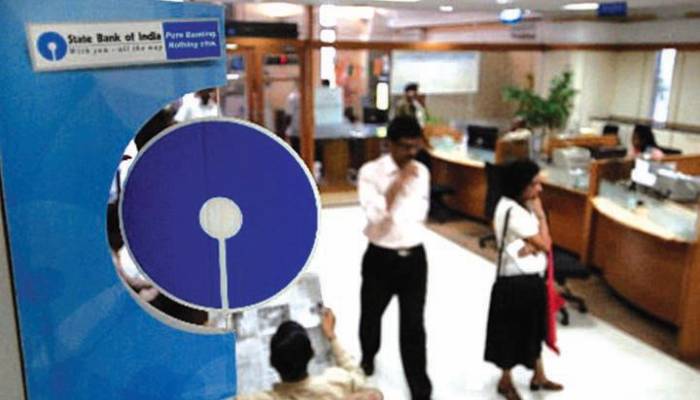
or

The accumulation of NPAs is bad for the growth of a stable financial system and it is expedient to bring in reforms in Securitisation Law. The authors herein bring forth a complete run down on the specifics of the reforms agenda.
The need to amend the SARFAESI Act is paramount in order to address the issues relating to speed-up the process for the recovery of the outstanding from the defaulting borrowers. The growing menace of NPAs, in fact, threatens to destabilise the entire financial structure of the nation, therefore, it is important that some reforms are brought in the existing legal framework.
The overall slow-down of economy in India, as is being reported, has led to a natural fear of current NPA levels to rise necessitating the Finance Ministry putting a notice to the lenders to check the NPAs and take required action to recover the outstandings from defaulting borrowers. There is no doubt that the SARFAESI Act brought down the NPAs significantly and have provided a tool to the lenders for the recovery of its dues by taking recourse to claim attached possession and sell the secured assets mortgaged by the borrowers in favour of the lenders. The SARFAESI Act needs to be updated and amendments to add teeth to the existing legislative framework where this remedy can be reasonably and efficaciously used by the Lenders.
After a long wait, the Central Registry (viz. Central Registry of Securitisation Asset Reconstruction and Security Interest of India) (CERSAI), has been created and notified on 19 May, 2011 under the SARFAESI Act, which requires the lenders to report the charge created on the assets of the borrower to this Registry. This important step shall definitely reduce the instances where the borrowers were able to default the lenders by creating charge on their immoveable assets on the base of forged Title Deeds and/or by creating multiple charges in favour of different lenders on the same assets. Although there has been significant delay in creation of the Central Registry (which took almost 9 years to be created and put into force), still it is a welcome step towards prevention of fraud and reducing the risk elements for the lenders, especially where security is in the form ofimmoveable properties and where the defaulting borrowers are non-corporates , as prior to CERSAI there was no registry which tracked the security creation for non-corporates like a Registrar of Companies for borrowers in the nature of companies / corporate.
It may be observed that conversion of debts into shares and allowing the banks to accept immovable property and the freedom to the banks to sell/opt-out at right juncture within the statutory period under the Banking Regulation Act in full or partial satisfaction of the claim of the banks against the defaulting borrower would be a welcome step giving great relief to the banks in a stressed economy. The proposed amendment also seeks to address the concern of the borrowers as to the bank’s responsibility by inserting proviso to Section 14 of SARFAESI Act whereby the banks while submitting an application before Chief Judicial Magistrate or District Magistrate shall also submit an affidavit with the declarations affirming that the banks as a secure creditor have complied with the provisions under the SARFAESI Act. The Chief Metropolitan Magistrate or the District Magistrate has to satisfy themselves as to the contents of the affidavit before passing suitable order for the purpose of taking possession of the secured assets.
The recovery process in any developing economy must change and adapt to the current requirements and expectations of the lenders. The idea is that the borrowers should not be permitted to take undue advantage of law and escape their liability towards a bonafide lender by abusing the process established by law and/or delay the recovery process to the extent that the lender get frustrated and/or the benefit to accrue to the lender by affecting recovery in a reasonable period of time is lost completely. Though the legislators haverealised the need to intervene and amend this decade-old enactment through the Amendment Bill, there are still some issues which needs immediate attention regarding the expeditious recovery process which are as under:-
As per the norms suggested by the Reserve Bank of India, before an asset is classified as a NPA, the borrower would have to default in the payment of interest and/or installment for a period of 90 days or more. After this period of 90 days, once the asset is classified as an NPA, if the lender chooses to initiate action under the SARFAESI Act, the lender is expected to give a 60 days’ notice to the borrower. In this whole exercise, almost 150 days are lost. There is a strong need to reduce this period. Firstly, to speed-up the recovery process, and secondly the period of 60 days in itself is a long period after expiry of 90 days period to be eligible for an enforcement action under the SARFAESI Act. The borrower gets enough time to draw a strategy to defeat the claim of the lender and/or induces them to adopt at times illegal or fraudulent means to defeat or delay the claim of the lender.
The compliance required from the time of issuing of notice to the sale of secured assets is multiple, time-consuming, confusing and onerous. Steps can be taken to bring an amendment which reduces the complications on the process involved and also the compliance to be made. There is lack of clarity as to what the lender should do if the notices to be sent to the borrowers at various stages, as reflected above, are not served upon the defaulting borrowers, though the alternate procedures as stipulated in the Act are followed. One of the main challenges is that the borrower either changes their address without notice to the lender or avoid service of notices by adopting all possible dubious means. On the other hand, the lender gets frustrated as to catch hold of the borrower, which in itself becomes a herculean task. The borrower takes advantage of this situation and is able to stall the proceedings under the SARFAESI Act by approaching Court, if any of the compliance is not made by the lender and/or there is any short-comingeven trivial in the said compliance including but not restricted to the service of notices.
Most of the lenders are reluctant to take possession of the secured assets of their own and prefer to seek administrative support by approaching the competent court to take police assistance/protection. The lenders have experienced good cooperation from the court in this regard; still the process at times becomes time-consuming and complicated, depending upon the volume of work with the court concerned, jurisdiction, etc., special or designated courts can be set up only for this purpose or probably a forum can be created where only these kinds of matters are dealt with to avoid procedural delays.
The defaulting borrowers tend to file frivolous applications before the Debts Recovery Tribunal, Debts Recovery Appellate Tribunals, Civil Courts or before the High Courts challenging the action initiated by the lenders under the
SARFAESI Act. A survey would show hundreds of such applications pending before various forums. There is a need that this practice adopted by the borrowers is checked and an amendment is introduced to the Act where the intervention by any judicial Forum on the application filed by a defaulting borrower to delay or default the claims of secured creditors is required to be disposed off as per the prescribed procedures and a definite time-frame. There is also a need to check if a way is found to discourage such an action on the part of the defaulting borrowers. Though, the Civil Courts and the High Courts have, as a general norm, do not intervene in such proceedings, as under Section 17 of the SARFAESI Act, there is an alternate and efficacious remedy for the borrower to approach the DRT. The banks are also not barred from proceeding with the recovery process under the SARFAESI Act unless there is an order of injunction, the impending and frivolouslitigations by the borrower apart from creating the intended nuisance value also entails administrative and cost implication to manage or monitor those litigation.
Wherever the defaulting borrower challenges the action of secured creditors under the SARFAESI Act, the intention is clear which is either to defeat the claim of the Lender or delay the proceedings. An amendment is to be considered where the defaulting borrower is compelled to deposit a reasonable percentage of the outstanding dues with the court or DRT with the lenders even before his/their application is heard, thereby putting to an end the kind of the trivial challenge of the borrower to the action initiated by the lender.


On Impact of CERSAI and continuance of legacy problem
Notification of CERSAI reminds me of the saying “too little too late”, as the registry was envisaged in 2002 but has been brought into existence only now. It is true that the registry will definitely help in checking the creation of multiple charges on the same asset by white collar criminals. But the menace would not be rooted out fundamentally. It is undeniable that cheating the financial institutions henceforth would be difficult and registration with CERSAI would undoubtedly help. But the problem is that it would not resolve the legacy problem as only data from April 2011 shall be uploaded but older database would continue to remain inaccessible hence the legacy would continue and therefore the cheating of the financial institutions. Besides the legacy problem what more could be done is that such data is made available at the state level at the registration offices so that no fraudulent transfer of property takes place or fraudulent charge is created on the property to the disadvantage of people other than the financial institutions. Once this changes are brought it then it would be a much better situation so that not just the financial institutions but also common people are also protected from the menace of such fraudulent transactions.
In view of the growing menace of NPAs and a strong need to check and prevent such NPAs, it is incumbent that apart from the Amendment Bill the Act is further reviewed and suggestions taken from the banks, the stake-holders and distinguished legal luminaries and required amendments are brought in the Act without waste of any further time to address and expedite the recovery process and stem the further growth on NPAs.
Rajesh Narain Gupta is the Managing Partner of S.N. Gupta & Co., Advocates. He specialises in commercial, real estate, and banking laws. Mr. Gupta represents major international, private and public sector banks and financial institutions in India and abroad. He has been actively involved in framing of policies, procedures and guidelines for various Banks with regard to implementation on the procedural aspect of SARFAESI.
S. Babu is Partner with SNG & Partners, Advocates & Solicitors, Mumbai.

Lex Witness Bureau

Lex Witness Bureau

Lex Witness Bureau

For over 10 years, since its inception in 2009 as a monthly, Lex Witness has become India’s most credible platform for the legal luminaries to opine, comment and share their views. more...
Connect Us:


The Grand Masters - A Corporate Counsel Legal Best Practices Summit Series
www.grandmasters.in | 8 Years & Counting
The Real Estate & Construction Legal Summit
www.rcls.in | 8 Years & Counting
The Information Technology Legal Summit
www.itlegalsummit.com | 8 Years & Counting
The Banking & Finance Legal Summit
www.bfls.in | 8 Years & Counting
The Media, Advertising and Entertainment Legal Summit
www.maels.in | 8 Years & Counting
The Pharma Legal & Compliance Summit
www.plcs.co.in | 8 Years & Counting
We at Lex Witness strategically assist firms in reaching out to the relevant audience sets through various knowledge sharing initiatives. Here are some more info decks for you to know us better.
Copyright © 2020 Lex Witness - India's 1st Magazine on Legal & Corporate Affairs Rights of Admission Reserved